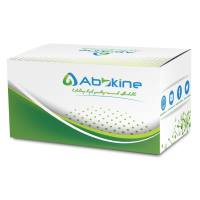An Improved In Vitro BloodBrain Barrier Model: Rat Brain Endothelial Cells Co-cultured with Astrocytes
互联网
855
In vitro blood–brain barrier (BBB) models using primary cultured brain endothelial cells are important for establishing cellular
and molecular mechanisms of BBB function. Co-culturing with BBB-associated cells especially astrocytes to mimic more closely
the in vivo
condition leads to upregulation of the BBB phenotype in the brain endothelial cells. Rat brain endothelial cells (RBECs)
are a valuable tool allowing ready comparison with in vivo
studies in rodents; however, it has been difficult to obtain pure brain endothelial cells, and few models achieve a transendothelial
electrical resistance (TEER, measure of tight junction efficacy) of >200 Ω cm2
, i.e. the models are still relatively leaky. Here, we describe methods for preparing high purity RBECs and neonatal rat astrocytes,
and a co-culture method that generates a robust, stable BBB model that can achieve TEER >600 Ω cm2
. The method is based on >20 years experience with RBEC culture, together with recent improvements to kill contaminating cells
and encourage BBB differentiation.
Astrocytes are isolated by mechanical dissection and cell straining and are frozen for later co-culture. RBECs are isolated
from 3-month-old rat cortices. The brains are cleaned of meninges and white matter and enzymatically and mechanically dissociated.
Thereafter, the tissue homogenate is centrifuged in bovine serum albumin to separate vessel fragments from other cells that
stick to the myelin plug. The vessel fragments undergo a second enzyme digestion to separate pericytes from vessels and break
down vessels into shorter segments, after which a Percoll gradient is used to separate capillaries from venules, arterioles,
and single cells. To kill remaining contaminating cells such as pericytes, the capillary fragments are plated in puromycin-containing
medium and RBECs grown to 50–60% confluence. They are then passaged onto filters for co-culture with astrocytes grown in the
bottom of the wells. The whole procedure takes ∼2 weeks, using pre-frozen astrocytes, from isolation of RBECs to generation
of high-resistance/low-permeability RBEC monolayers.









